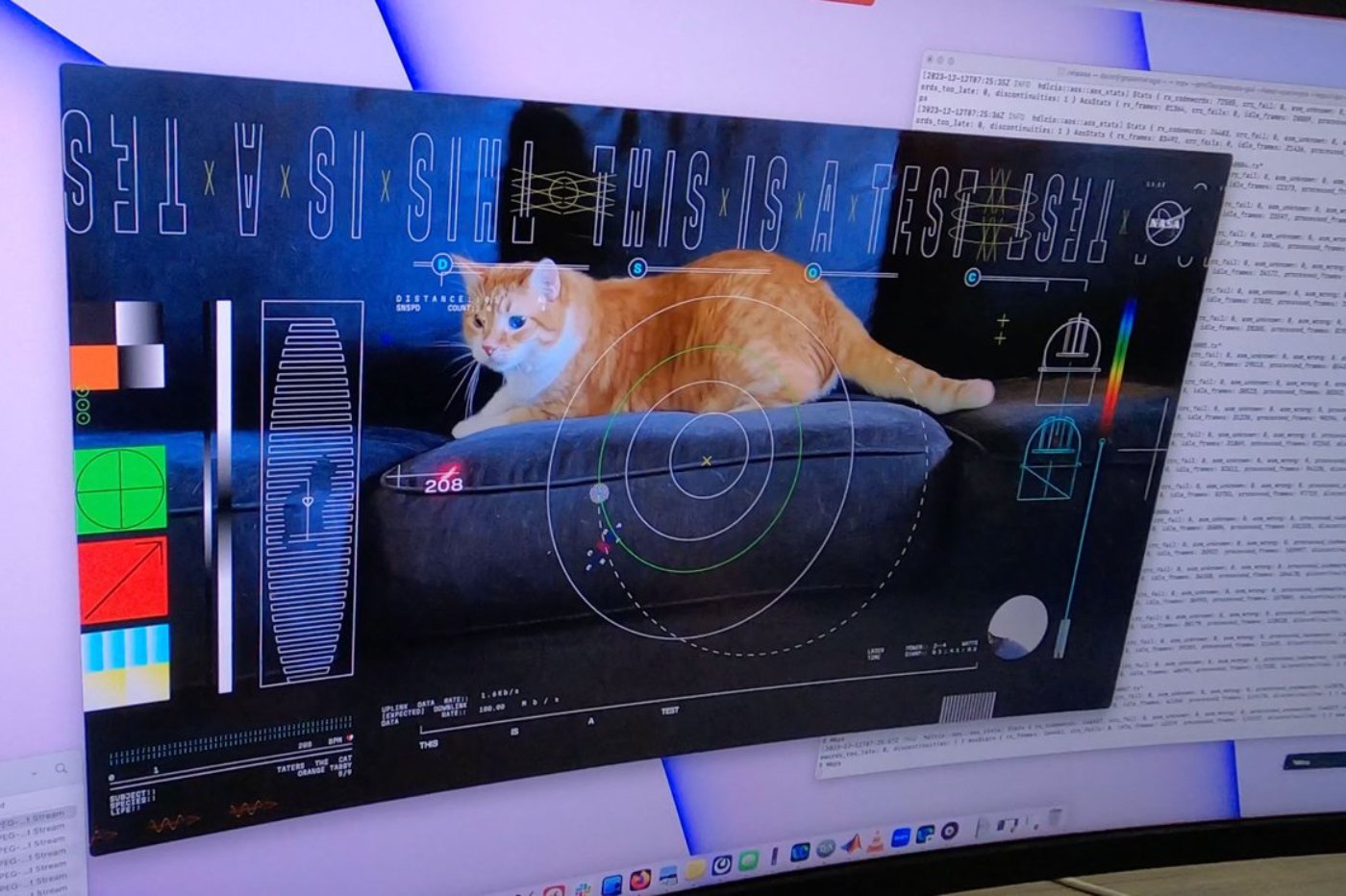NASA has achieved a real feat by broadcasting ultra-high-definition video of a cat, called Taters, at a distance of more than 30 million kilometers. Performance achieved using laser technology, a new breakthrough in interplanetary communications!
Cats invade space
The 15-second video, which shows Taters chasing a laser pointer onto a couch, was sent from a space probe launched by a SpaceX Falcon Heavy rocket from Kennedy Space Center in Florida on October 13. It was broadcast in real time on December 11 at NASA's Jet Propulsion Laboratory (JPL) in California. The signal took 101 seconds to reach Earth, with a maximum speed of 267 Mbps, outpacing most broadband Internet connections.
This transmission was made as part of NASA's Deep Space Optical Communications (DSOC) mission, the space agency's first attempt to develop communications systems beyond the distance of the Earth and the Moon. The goal is to explore technologies capable of providing high bandwidth from deep space to Earth, as current radio frequencies are limited to transmitting large data (high-quality images and videos) over large distances.
According to NASA Deputy Administrator Pam Milroy, this achievement underscores the agency's commitment to advancing optical communications, which is key to meeting future data transmission needs. This technology is essential to achieving future exploration and scientific goals, including manned interplanetary missions.
This laser communications demonstration, launched via NASA's Psyche mission, aims to transmit data from deep space at rates 10 to 100 times higher than current radio frequency systems used by space missions.
As the Psyche probe heads toward the main asteroid belt between Mars and Jupiter, the test will send high-speed signals as far as Mars is from Earth. The stakes are high: it's really about the ability to send complex scientific information, high-definition images and video, which will pave the way for humanity's next great stage: sending humans to Mars. And maybe cats.

“Music guru. Incurable web practitioner. Thinker. Lifelong zombie junkie. Tv buff. Typical organizer. Evil beer scholar.”







More Stories
Work on Espace Riopelle has been launched after a year of delay
CERN, “one of the pillars of international Geneva”
Immunology, the science that changes your health